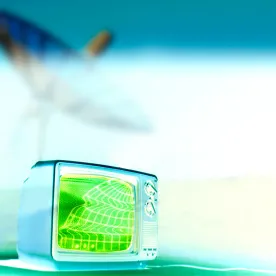How did we go from the claims in Alice being considered abstract, claims that clearly involved a well-known financial concept (e.g, intermediated settlement) merely implemented on a computer, to admittedly novel (and likely non-obvious) concepts inexorably tied to computing systems being considered abstract?
District courts and the CAFC seem to be quickly expanding the reach of the abstract idea to invalidate software implemented inventions. In Netflix v. Rovi (Netflix, Inc. v. Rovi Corporation, Case No. 11-cv-6591, NDCA 2015), the court uses the Alice/Mayo abstract idea test to invalidate as non-patentable subject matter claims directed to an admittedly unknown concept rooted in computer technology, just because the claims could be articulated as being directed to an abstract idea. This court, and many others, seem to have missed the part of Alice where the Supreme Court cautions that all claims at some level involve an abstract idea.
In this case, Rovi attempts to defend validity of five patents related to video-on-demand and tv/movie listing interfaces. Many of the five patents were understandably doomed due to very broad claims to very broad concepts. However, the decision finding claims of U.S. 7,103,906 (the ‘906 patent) invalid under 101 highlight the troubling direction district courts (and the CAFC) seem to be continuing to head with Mayo/Alice 101 analysis.
The ‘906 patent is directed to on-demand media bookmarking of streaming content coupled with delivery of the content is different formats to different devices.
Representative Claim for the ‘906 patent:
-
A method for providing configurable access to media in a media-on-demand system comprising the steps of:
delivering the media to a first client device through a first communications link, wherein the media is configured in a format compatible with identified device properties of said first client device and said first client device is associated with a first user;
recording a bookmark specifying a position in the media; and
delivering the media to a second client device through a second communications link, said delivery to said second client device beginning at said position specified by said recorded bookmark, wherein the media is configured in a format compatible with identified device properties of said second client device and said second client device also is associated with said first user.
The claims of the ‘906 patent seem to do a reasonable job (especially given the timeframe from which this patent originates) in reciting and incorporating multiple computing devices. The claim is admittedly fairly broad, but with a priority date of Sep. 2000 it was likely a fairly early patent in the area of streaming media. Additionally, the functionality covered by the claim is relatively specific (delivering content in two different formats, while maintaining a bookmark position between two different streams) and likely not trivial to implement. Despite all that, this court is very quick to dismiss it as nothing more than an abstract idea..
In dismissing these claims the court simply generates an abstract idea to fit the claims, and dismisses the computer implementation as being nothing more than generic. The court actually states that the client/server system is “a generic client/server system,” a client/server system that the court describes as “creating a ‘bookmark’ to allow users to start watching a program on one device then resume the program at the same point on a different type of device.”
In one of the more troubling passages, the court states that “[g]iven Alice’s rejection of a ‘general purpose computer’ as sufficient to establish patentability, a patentee must show that the machine itself is a particular machine, and not just that a generic machine is being used for a particular purpose.”
It is unclear how one could ever overcome this type of reasoning. Regardless of how detailed recitation of an algorithm is, following this court’s formula any computer implemented invention can just be dismissed as an abstract idea implemented on “a generic machine being used for [the] particular purpose” of implementing the abstract idea. Assuming for a moment that the ‘906 patent involves concepts that were truly novel and non-obvious, then doesn’t it follow that no generic computer at the time of the invention performed the recited subject matter? Further, even if a generic computer was “capable” of performing the claimed subject matter, none had been configured to do so.
The subject matter at issue here did not involve an old and well known method or concept that was simply implemented on a computing system. Rather these claims involved new methods of using computing technology to provide streaming media content to different devices.
Rovi attempted to argue both sides of the Machine or Transformation test. While the court summarily dismissed the machine side using the generic client/server system argument, the transformation side got a bit more traction. However, in the end the court failed to fully appreciate the transformation of the streamed content into two different formats and dismissed this angle as well. It is a bit unclear to me why Rovi didn’t attempt to argue an analogy to DDR Holdings, as it would seem that they would have had an argument that their recited media server changed what would normally occur when attempt to stream previously viewed content to a new device (e.g., start over at the beginning).
Netflix v. Rovi appears to represent the next step by the courts in widening the breadth of subject matter likely to fall victim to mis-application of the Mayo/Alice abstract idea test.



 />i
/>i
